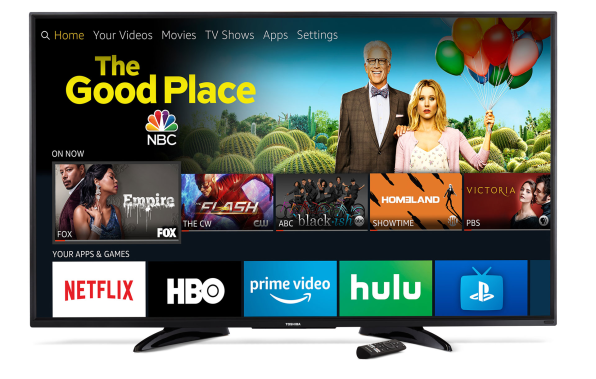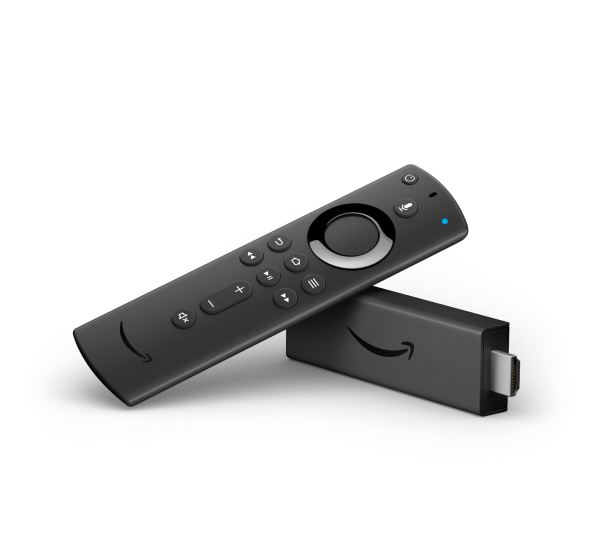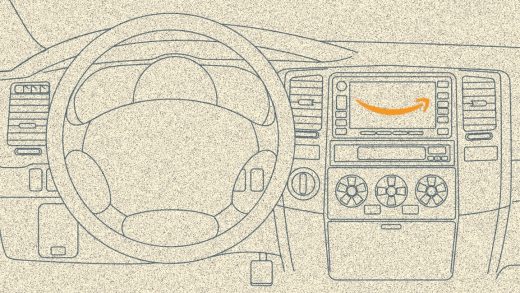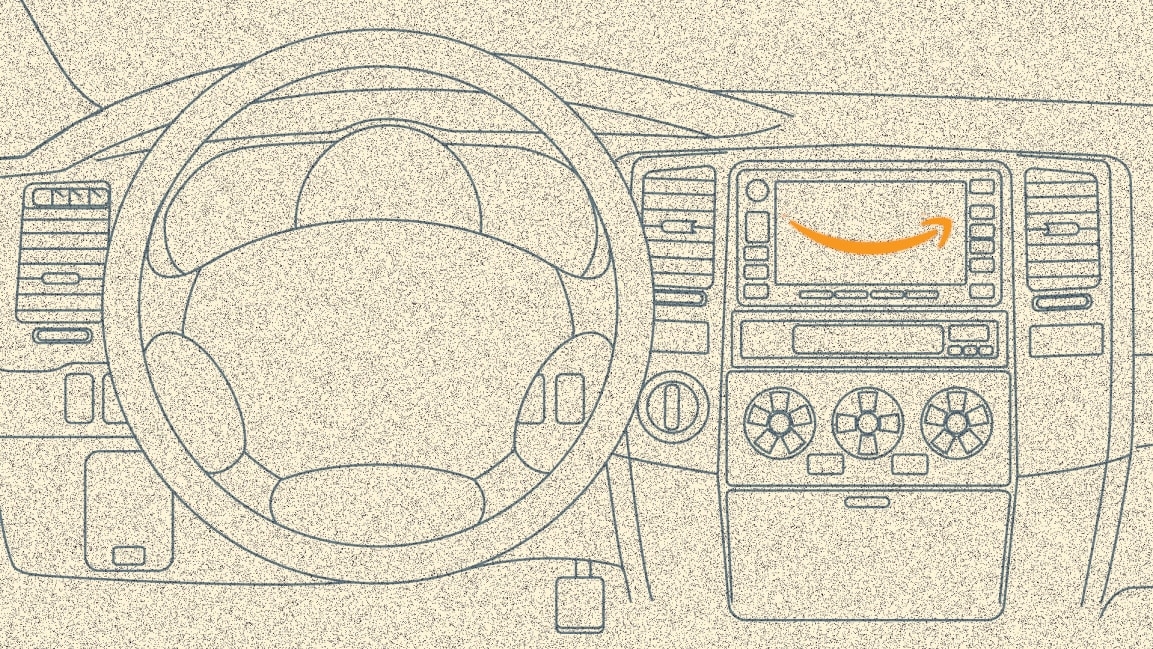Next up for Amazon’s Fire TV: Smart TVs, cable boxes, maybe even cars
Last week, in a rare act of sales-figure specificity, Amazon announced that it has more than 30 million active Fire TV users. That’s up from 25 million users in October, and more than the 27 million users that Roku had bragged about just a few days prior.
But while Amazon streaming devices such as the Fire TV Stick are a hit, the company has been caught snoozing on turning Fire TV into a platform for more than just its own dongles and boxes. It only started embedding Fire TV software into TVs in 2017–three years later than Roku–and it offers no version of Fire TV for cable and satellite companies, more than 100 of which are using rival Google’s Android TV software in their set-top boxes.
Naturally, Amazon now wants to rectify the situation as the company tries to sink its hooks into more aspects of consumer’s lives. Sandeep Gupta, Amazon’s vice president of Fire TV product development, told me that Fire TV software will expand to more areas, including additional smart TVs, cable boxes, and possibly even car entertainment systems.
“The great thing about the Fire TV service is that it’s now very adaptable,” he says. “And because we have such great brand awareness, and such great recognition from customers, we can bring it to all kinds of different products and really have that resonate for the customer.”

Waiting for more Fire TVs
Gupta admitted that Amazon was late to the smart TV integration trend. Roku started working with smart TV manufacturers such as TCL in 2014, and Google has partnered with Sony and other TV makers from 2015 onward. Amazon’s first Fire TV Edition sets arrived in 2017 with a small number of Westinghouse, Element, and Seiki TVs. Although a bigger partnership with Best Buy followed last year, in which Fire TV became the exclusive operating system for Best Buy’s Insignia brand, Amazon announced no new televisions at the CES trade show last week.
“You can imagine that it’s timing and sequencing. In general we tend not to do a lot of pre-announcements, but you’ll see a lot more from us this year,” Gupta said. “From [Best Buy’s] perspective, it’s delivered beyond even their expectations, and customer feedback has been great.”
It’s worth nothing that if Amazon does launch more Fire TV Edition televisions this year, they’ll have to be sold through Best Buy or Amazon itself. The deal between those two retailers currently precludes Amazon from offering Fire TV sets through other retailers such as Target or Walmart.
“For now, it’s exclusive, because we want to have this deep relationship, but in the future, that could change,” Gupta said.
Cable boxes and beyond
Amazon may also have been surprised by rival Google’s success getting Android TV onto cable, satellite, and telco set-top boxes. In December, Google disclosed that stat about it working with more than 100 TV operators around the world, which in turn helped the platform reach “tens of millions” of users. By loading their set-top boxes with Android and giving customers easy access to apps like Netflix and Hulu, traditional TV providers aim to stave off cord-cutting while customizing the interface to emphasize their own services.
Gupta says Amazon will now be looking at the cable box business as well. “We probably have come a little later to that,” he acknowledges. “We’ve been focused more on our devices, but I do think we’ll continue to expand where we offer our service. Last year of course the focus was on smart TV, and operators are obviously a logical next step in that scenario.”
Beyond that, Gupta hints at other places where Amazon’s Fire TV software could pop up. He mentions soundbars as a possibility (incidentally, an Android TV-based soundbar from JBL is supposed to ship this spring), and even suggested car entertainment systems as a potential avenue.
“That could be interesting, right? We have a lot of great Alexa integration with car companies, and they are looking for entertainment options, too,” Gupta said. “I think those are potential things we could do that would be very compelling.”

Bettering the basics
That’s not to say Amazon is neglecting the hardware side of its business. On Tuesday, it upgraded the remote for its best-selling Fire TV Stick to include TV volume and power buttons, bringing it in line with the company’s Fire TV Stick 4K and Fire TV Cube. Alexa voice control also remains a major focus. Gupta says that more than 1.7 million people have paired their Fire TV device with a separate Echo speaker, and last year’s Fire TV Cube builds those voice controls into the streaming box itself. Amazon even released a DVR for over-the-air broadcast channels called the Fire TV Recast, and that device is integrated with Alexa voice controls as well.
“We took a lot of big bets last year,” Gupta said. “We moved away from our stick-box metaphor and into whole different areas, and I think it’s really had an impact with our users.”
Looking ahead, Amazon is trying to solve the same TV problem as everyone else: With so many new and forthcoming sources for streaming video, how do viewers sort through it all? To that end, Amazon wants to introduce more ways to customize the Fire TV interface without making it overly burdensome for users.
“We’re at looking at different ways to personalize the experience, and those are things we’re looking at and we’re experimenting with,” Gupta said. “I can’t tell you exactly what we may bring, but we recognize that users watch TV in different ways, with different preferences, and we want to figure out the right experience for those users.”
Amazon is also still working through its impasse with Google, which started blocking the Fire TV’s YouTube app about a year ago. (Google said it was retaliating for Amazon’s refusal to sell certain Google products and to offer a Prime Video app on Google’s Chromecast streamer.) Amazon has since come up with a workaround, using the Fire TV’s built-in web browser to quickly load a YouTube.com bookmark. You can even ask Alexa to search for videos within YouTube. Still, Gupta said the lack of a proper app has created a misconception that Fire TV doesn’t support YouTube at all. There’s also no way for Fire TV users to access YouTube TV, Google’s $40 per month live TV streaming service.
Gupta said discussions with Google are still ongoing, and pointed to the arrival of Chromecast on Amazon.com last month as a sign of progress.
“I think we are excited about potentially having these [apps] on board,” Gupta said. “There’s a lot that goes into that, a lot of discussions happen, and I think in general it’s positive, but these things just take time.”
(18)



